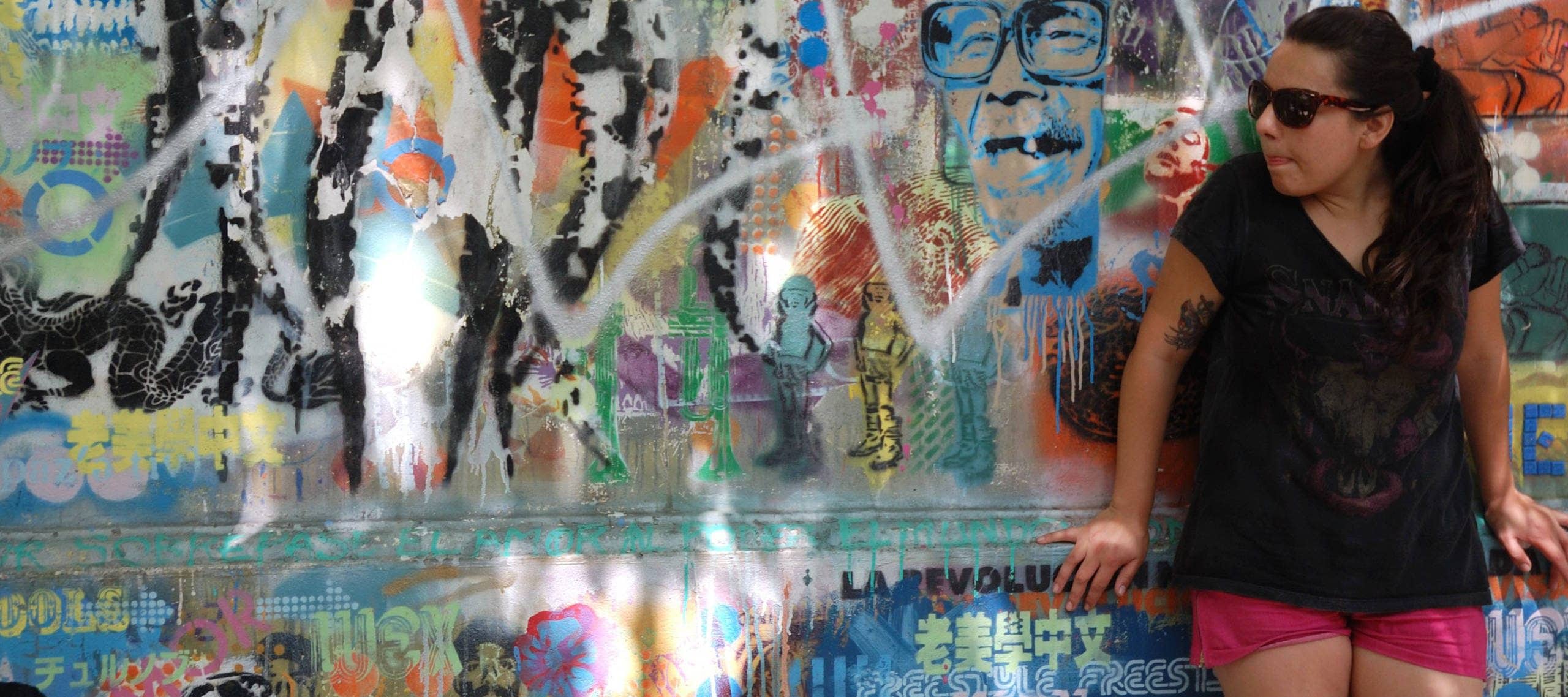
The brightly colored walls around Argentina are slathered with paint. To us, the designs stick out, but to Argentines, street art is just another aspect of daily life. Semester at Sea students had the opportunity to discover the stories behind the street art that decorates Buenos Aires on a recent trip.
While graffiti and street art are illegal in the United State, the art form is legal and a common form of expression in Argentina, said Ana Montenegro, our guide for the day. Graffiti and street art are two separate art forms. Graffiti artists utilize calligraphic designs and words and phrases for their pieces, while street art pieces are typically more elaborate and concentrate on an object, rather than writing. Street art around Argentina ranges from animals to symbolic representations of past struggles.
“Graffiti artists produce art for themselves; street art is art for the community,” Montenegro said.
Graffitimundo is a local organization that aims to educate the public about the long-standing tradition of street art. The group helps to spread the word about street artists that began the, “reclaim the streets phenomenon,” Montenegro said.
Some street artists in Argentina have created quite a name for themselves, and several have begun to collaborate together as well. In November of 2011, over 100 different artists came together to paint the neighborhoods of Palermo, Puerto Madero and San Telmo.

While exploring street art in Buenos Aires, Semester at Sea students got to meet Jaz, a street artist who painted “Teta y Salta,” honoring two of his friends who were killed as children by the police.
Other pieces around Buenos Aires reflect activism, harkening back to violence that Argentina has encountered. In close proximity to Teta and Salta, the wall behind a playground is painted with the characteristic white scarves of the Mothers of the Plaza de Mayo. The women still protest to reunite with their children who were abducted by the Argentine police.
“I thought it was so interesting how different artists can express similar political messages through street art,” said Jude Hezbor, an international studies student at the University of Virginia. “It’s a lasting reminder of their political struggles and how they’ve overcome them, and it’s their way of expressing themselves.”
Street art creates a dialogue with the public. “Once the piece is on the wall, it doesn’t belong to the artist anymore, it belongs to anyone who feels connected to it,” Montenegro said.




